
Related
Guests
- Mario MurilloProfessor of communications at Hofstra University and producer at Pacifica radio station WBAI here in New York. He is author of Colombia and the United States: War, Terrorism and Destabilization and is completing a book on the indigenous movement in Colombia and its use of popular media in community organizing.
- Manuel Rozentalphysician, human rights activist, member of the Hemispheric Social Alliance and the Association of Indigenous Councils of Northern Cauca in Colombia. Fled to Canada in 2005 following several threats on his life.
- Michael EvansDirector of the Colombia Documentation Project at the National Security Archive.
Three American military contractors freed from the Colombian jungle have spoken out against their former captors, the Revolutionary Armed Forces of Colombia, or FARC. Marc Gonsalves, Thomas Howes and Keith Stansell were among the fifteen hostages, including the French Colombian politician Ingrid Betancourt, rescued in an elaborate military operation last week in a major blow to the FARC. We host a roundtable discussion with Mario Murillo, author of Colombia and the United States; Michael Evans of the Colombia Documentation Project; and Manuel Rozental, a Colombian physician and human rights activist living in Canada following several threats on his life. [includes rush transcript]
Transcript
AMY GOODMAN: We turn now to the three American military contractors freed from the Colombian jungle, speaking out against their former captors, the Revolutionary Armed Forces of Colombia, or FARC — Marc Gonsalves, Thomas Howes and Keith Stansell, among the fifteen hostages, including the French Colombian politician Ingrid Betancourt, who was rescued in an elaborate military operation last week. The Colombian government says it managed to infiltrate FARC command and fool the rebels into thinking they were transferring the hostages to another location.
On Monday, the three Americans spoke publicly for the first time since their release. Marc Gonsalves called his former FARC captors “terrorists” and urged them to release hundreds of remaining hostages.
The freed Americans are employees of the military firm Northrop Grumman. They have been captured — they were captured in 2003 after their surveillance plane crashed in the Colombian jungle.
The rescue operation was widely seen as a major blow to the FARC. The fifteen freed prisoners were the most high-profile of hundreds the FARC had held in hopes of securing the release of captured rebels and achieving other political demands. The group has already been depleted by the deaths of three senior leaders this year and a series of defections.
Criticism of FARC has come from all sides. Indigenous, peasant and human rights groups have denounced FARC’s kidnappings and armed operations and said they also deflect attention from government abuses.
I’m joined now by three guests. Here in the firehouse, Mario Murillo, professor of communications at Hofstra University, a producer at Pacifica radio station WBAI here in New York, author of the book Colombia and the United States: War, Terrorism and Destabilization, currently finishing another book on the indigenous movement in Colombia and its popular use of the media in community organizing. Also, in Washington, D.C., I’m joined by Michael Evans, director of the Colombia Documentation Project at the National Security Archive. And on the line from New Brunswick, Canada, Manuel Rozental. He’s a Colombian physician, human rights activist and member of the Association of Indigenous Councils of Northern Cauca in Colombia. He fled to Canada in 2005 following several threats on his life.
Mario, you have been writing about what happened, and now there’s serious questions, Swiss reports of whether in fact this was staged, whether $20 million wasn’t paid in ransom for these prisoners by the Colombian government.
MARIO MURILLO: Right. There’s a lot of questions, actually, because there’s three different versions. Unfortunately, the official version is the one that’s getting the most play, and obviously Alvaro Uribe is getting a lot of political mileage out of it. And that’s, of course, this dramatic rescue operation that you described in the introduction.
There’s two other reports. The one that you just alluded to from the French — Swiss radio — public radio service, that — based on high sources that the reporters had, saying that one of the wives of one of the guards, one of the FARC rebels who was involved in securing and maintaining security around the hostages, was in constant contact and made this arrangement for a $20 million ransom pay. And that’s from one report.
Another report, which probably is a lot more feasible if this — you know, I haven’t gotten deeper in that one, but the other report is that the Colombian government actually took advantage of a diplomatic effort that was already underway for a long time by the former French consul in Bogota, as well as a leading Swiss diplomat who was in Colombia, and they were making arrangements, and they even got the green light from the Colombian government. It was in the Spanish daily, El Pais, when the president, Colombian president, actually announced that, yeah, this interchange, this dialogue, was actually proceeding. And it turns out, apparently, according to this report, that the Colombian government intercepted the helicopters that were on their way, so it wasn’t really a high infiltration operation that was in the highest levels of the FARC commanders. The FARC were actually turning the folks over to specifically this delegation led by these two diplomats, and apparently the Colombian government kind of took, you know, a right turn and got a lot of political mileage as a result.
A lot of questions are still around what happened, but unfortunately, as I said, the official story is the one that’s getting out the most.
AMY GOODMAN: I want to turn now to the freed American military contractors. On Monday, they spoke out for the first time since their rescue. Marc Gonsalves was the most vocal of the three in criticizing FARC. This is some of what he had to say.
MARC GONSALVES: There was a time that when I slept, I would dream that I was free. That time was only a few days ago. It feels so good to be free here now with all of you.
I want to tell you about the FARC, a guerrilla group who claim to be revolutionaries fighting for the poor people of Colombia. They say that they want equality. They say that they just want to make Colombia a better place. But that’s all a lie. It’s a cover story, and they hide behind it, and they use it to justify their criminal activity.
The FARC are not a revolutionary group. They are not a revolutionary group. They are terrorists. Terrorists with a capital T. Bad people. Their interests lie in drug trafficking, extortion, kidnapping. They refuse to acknowledge all human rights. And they reject democracy.
I’ve seen them hold a newborn baby in captivity, a baby that needed medical help, that was sick. They kept him there in the jungle.
I, myself, and my friends, Tom and Keith, we’ve also been victim of their hate, of their abuse and other torture. And I have seen how even their own guerrillas commit suicide in a desperate attempt to escape the slavery that the FARC have condemned them to.
The majority of the FARC’s forces are children and young adults. They come from extreme poverty and have very little or no education. Many of them, they can’t even read. So they’re easily tricked into joining the FARC, and they’re brainwashed into believing that their cause is a just cause. But once they join, they can never leave, because if they try, they will be killed.
There are people who right now in this very moment, they’re still there in the jungle being held hostage. In this exact moment, right now, they’re being punished, because we got rescued successfully. I want you guys to imagine that. Right now, right now, they’re wearing chains around their necks. They’re going to get up early tomorrow morning, and they’re going to put a heavy backpack on their backs, and they’re going to be forced to march with that chain on their neck, while a guerrilla with an automatic weapon is holding the other end of his chain like a dog.
Those are innocent people. Those are people that were fighting or working for the country. And all they want is what we wanted and what God had the grace to give us: our freedom.
I want to send a message to the FARC. FARC, you guys are terrorists. You deny that you are. You say with words that you’re not terrorists, but your words don’t have any value. Don’t tell us that you’re not terrorists; show us that you’re not terrorists. Let those other hostages come home. Agree to President Uribe’s proposal of an encounter zone. Anywhere and any time you want, he proposed an encounter zone. Then make the humanitarian agreement and let the others come home. Then after that, a peace process, because otherwise this downward spiral that the FARC are on now will continue, and the Colombian military is going to dismantle the entire organization.
AMY GOODMAN: That is the quote of the man, the American contractor, who was captured, Gonsalves, speaking yesterday — Marc Gonsalves — in San Antonio. Let’s begin with you, Mario. Your thoughts?
MARIO MURILLO: Well, first of all, he said a lot of things, so we can comment on a lot of things, obviously. One of the things being the fact of the terrible conditions in which these hostages are held is something that obviously nobody could really argue about. It’s unjust, and everybody from Fidel Castro to Hugo Chavez to many other people around the world have been demanding the FARC turn these folks over.
But he also says a lot of things that kind of whitewash the situation. First of all, I think it’s very important, one of the tragedies of this whole thing is that we will never get to the bottom of what Gonsalves and his so-called contractors were doing in Colombia. We have to recall that he was — first of all, the fact that his plane went down — the official record says it was an accident and they went down in the jungles, although the FARC had claimed initially that they shot it down.
We also have to point out that to use the term “hostages” in their case — not to justify that they were held for five years, by no stretch of the imagination — but to use the term “hostages” is very problematic in the context in which they were operating in southern Colombia. They were there in 2003, two years — a year and a half after President Bush already authorized US servicemen and contractors to conduct counterinsurgency, not counter-drug operations. That was in the heart of where the FARC were operating, in Caqueta and in the southern part of the country. So we will never get to the bottom of what exactly these folks were doing down there — again, not to justify, but I think that’s one of the many questions that are left unsaid.
And then, finally, his last comments there about what Uribe’s proposals are really are optimistic, if not completely naive. He doesn’t seem to understand that Uribe’s strategy is not to dialogue with the FARC. His intention is to totally dismantle them. He does not recognize them as a belligerent force. And the argument that they’re terrorists, which Gonsalves here is arguing, is something that Uribe has embraced to the detriment of any possibility of dialogue for long-lasting peace in Colombia.
AMY GOODMAN: Let me turn to Manuel Rozental. Your response right now, as a man who has fled Colombia, a physician, a human rights activist, now living in Canada, hearing the description of the FARC and also talking about the Uribe government? It’s interesting that Ingrid Betancourt, perhaps the most well-known hostage, who has now returned to France — said she may run for president again, in fact ran against Uribe — said Colombian President Alvaro Uribe should soften his tone when dealing with FARC guerrillas. She urged Uribe to break with the language of hatred. Manuel?
MANUEL ROZENTAL: Yes. Hi, Amy. Indeed, it’s very interesting. I, first of all, have to say, like I think almost every Colombian, that we were absolutely elated by the liberation of Ingrid and that her condition is good, and one cannot downplay that. Regardless of how it was achieved, it was fantastic that she was released unharmed and that all the other ones were, as well.
Also, what Mario was saying, they were really fourteen prisoners of war and one hostage released. The fourteen prisoners of war, mistreated, abused, and I’m also glad, as everybody, that they’re free.
And in fact, I would say, knowing Ingrid before she was kidnapped, and precisely two or three days before she was kidnapped by FARC, she actually met with FARC commanders, including Raul Reyes, and said directly that she demanded a gesture of goodwill from FARC in order for peace to be achieved in Colombia. And her almost exact words were “Your gesture of goodwill has to be no more kidnapping in Colombia, and then, otherwise, if you don’t do that gesture, if you don’t carry it out, then Colombia will explode into a spiral of disaster, and you will lose all credibility.” So I think that background is essential, because just a couple of days after she says that, she’s kidnapped by the very people she demands that gesture from.
But I think it’s very important to put the whole thing into context. First, the Uribe government has peaked in popularity but also has reached a bottom in terms of illegitimacy. It was condemned just a few days before this operation of liberation was carried out because of buying out votes from congress to achieve re-election in a fraudulent way. Uribe’s administration is also linked to death squads, and so are the members of a coalition that led him to win the elections twice and high officials in government, including the secret police. So we’re talking about the regime with the worst human rights record in the continent and the army with the worst human rights record in the continent with the greatest US support, including the contractors or mercenaries that Mario was talking about. So the fact that this regime was involved in this liberation does not and should not and cannot cover up the fact that it is a horrendous regime.
So, the main point I’d like to make here beyond the discussion as to whether FARC or the government, which one is worse or which one is legitimate, the main point here is an SOS for the popular movements and organizations and the people of Colombia who right now, with the validation of Uribe’s regime, are at the greatest risk of continuing to be or even worsening the human rights records and abuses.
And to put this into perspective, there is a major plan in progress within Colombia and from Colombia with US support and for corporate interests to take over resources and wealth in territories in Colombia and, from there, to launch a war or a major conflict in the Andean region. That agenda is going to advance even further, after — if Uribe gets away with the legitimization of his regime after the liberation of Ingrid.
So, to go back to where I started, if Ingrid was the same Ingrid that was kidnapped by FARC, the one that denounced corruption of the government and launched a presidential campaign, she would be saying what I’m saying now. You cannot legitimate a corrupt regime for profit because you have liberated somebody. In fact, the person they’ve liberated fought against that corruption, and we hope she’ll do it again.
AMY GOODMAN: I wanted to bring Michael Evans into this discussion, director of the Colombia Documentation Project at the National Security Archive. Inter Press Service wrote an interesting piece called “Colombia: The General Ingrid Hugged,” and they’re talking about General Mario Montoya — General Mario Montoya Uribe and Ingrid Betancourt. For our radio listeners, we’re showing the image. You can go to our website at democracynow.org. Tell us about this general.
MICHAEL EVANS: Sure. Thanks for having me on the show. General Mario Montoya is the commander of the Colombian army, and he has a sort of spotted history with respect to human rights.
And it’s important to — for the listeners of this show to realize that there’s another side to the coin with the FARC. Few people have illusions that the FARC are well-intentioned liberals, but the other side of it are the right-wing paramilitary groups that have operated virtually unhindered in Colombia for decades.
Mario Montoya, the general that Ingrid hugged — and I haven’t seen the Inter Press story, but I can imagine where it goes — just last year was the subject of a CIA report leaked to the Los Angeles Times that implicated him in a joint operation with paramilitary forces in the city of Medellin just a few years ago, when he was a commander of an army brigade there. And Montoya, throughout his career, has been dogged by these kinds of allegations. A unit that he was a member of in the late 1970s, when he was a young intelligence officer, had actually formed a supposedly independent spontaneous paramilitary group known as the Triple A, the American Anticommunist Alliance, that was responsible for bombings and other kinds of threats and intimidation, sort of black ops type operations in Colombia. The unit that he was associated with created it as a completely clandestine project. So General Montoya has a lot to answer for, as does President Uribe. You know, many of his political allies have been implicated in the parapolitical scandal, a scandal touched off by the discovery of a paramilitary laptop a couple of years ago.
So there’s another side to this that I think is lost in this and is in danger of sort of being consumed or buried under this sort of all this wave of adoration for, you know, what is, I think, rightly considered a very successful military operation. Of course, everybody is happy that the hostages have been released, and it’s a huge victory for them and their families, but you have to also see this as a huge victory for Uribe and for — really as something that’s going to help him to get through and sort of avoid addressing some of these larger problems that he faces.
AMY GOODMAN: The Triple A, what is it, Michael Evans?
MICHAEL EVANS: Yeah, the Triple A was a group, again, that in the late 1970s and early 1980s operated as a clandestine unit of a Colombian military intelligence unit. Essentially, they were formed completely covertly, behind the scenes, without any attribution to the Colombian army. They were responsible for bombing the Communist Party headquarters and some other acts of intimidation around that time. It’s really the first documented evidence that I’ve seen, at least in US government documents, declassified documents, where a Colombian army unit is directly tied to a clandestine paramilitary group or right-wing —-
AMY GOODMAN: And its relation to the United States?
MICHAEL EVANS: Well, its relation to the United States, as far as I know, ends where -— in a cable reported from the US ambassador, Diego Asencio, in 1979, where he knows of this project and says — kind of downplays it and says, well, it’s not a big deal; you know, these are kind of dirty tricks being carried out by a desperate military facing this — excuse me, this guerrilla threat from the — what then was the M-19 guerrillas. But the US certainly knew about that project, and if they had done a little digging, would have known that Mario Montoya was a part of it, the man, of course, who is now the senior Colombian army official that is considered a great ally of the United States.
AMY GOODMAN: Manuel Rozental, can you return to Colombia today?
MANUEL ROZENTAL: Yeah, actually, I have been returning to Colombia, and my situation is not unusual, in that many of the people under threat actually go back to Colombia and have to be very careful and keep looking for mechanisms to work with social movements. In fact, my working with the Association of Indigenous Councils is at a moment when more indigenous peoples, through this regime of Alvaro Uribe, have been threatened, killed, disappeared or attacked than in any other previous regimes, which has a lot to say about what’s going on.
But, Amy, I wanted to point out something. Maybe you saw this, or the people listening to us. There was a 60 Minutes special on the Chiquita Brands scandal. The Chiquita is, of course, a banana company. And the documentary actually interviewed the CEO of Chiquita that had pleaded guilty of funding the paramilitary forces. But the argument he presented was that he was forced to fund the paramilitaries in order to survive, because he was threatened by them.
The main point here is that the person doing the interview managed to get through to Mancuso, the paramilitary commander and a close friend of Uribe’s, and Mancuso stated clearly in the program that many people saw in the US that there was never a threat, and it was out of consideration that there would be any tense relationship or threat between three companies — Dole, Chiquita, and Del Monte — in Colombia, because they were actually allies. He actually said clearly, “They funded us. They armed us. They trained us,” which is very important.
In fact, just a few days after this came out to the US public, Mancuso and another fourteen paramilitaries were taken, extradited into the US, so that they would be charged for drug trade and all the crimes against humanity and all the names he said he was going to name — Mancuso said he was going to denounce the direct links between the multinational US corporations, the US government, the Colombian government and the paramilitaries to the State Department and Department of Justice. And just after he says that, he is thrown into jail into darkness in the US, so that all these criminal activities and the architecture of power in Colombia could not be exposed. All this stuff is covered up.
And then, the links between corporate interest, paramilitary death squads, the Uribe and the Bush administration have been hidden, covered up completely. And then, the real problem in Colombia, which is an experiment from transnational corporations through the Uribe administration with the support of the Bush and the US government, can be hidden, and further hidden with what just happened.
As was being explained before, the whole paramilitary and death squad machinery in Colombia has been in existence for a long time with clear US support, with direct involvement of military and paramilitary forces in Colombia, and the Uribe regime is directly linked to all that.
AMY GOODMAN: It seems that the FARC has served the president of Colombia very well — Uribe. The US has given billions of dollars to Colombia. Mario Murillo, let’s end there.
MARIO MURILLO: Yeah. Well, I would make the argument that the FARC continue to be a kind of crutch for Uribe, and it’s all couched in the war against narcotrafficking and the war against terror. The United States is looking at this as the prime éxito or success story, and they’re pumping tens of millions of — billions of dollars into Colombia. And McCain was down there just last week, touting it —-
AMY GOODMAN: Was there the day of the release.
MARIO MURILLO: Was there the day of the rescue, and he’s touting it as a success story, without pointing out what already has been said, as well as the -— it’s not only a thing of the past, it’s a thing of the present. Amnesty International and the Fellowship of Reconciliation came out with a scathing report in May — late April, early May this year, documenting how the regiments, the army units that the Colombian army is receiving the most money of Colombian — of US support are directly involved in extrajudicial executions, a story that has been reported in the Los Angeles Times and the Washington Post but that, unfortunately, as you know, doesn’t get the drumbeat that this dramatic rescue would get.
AMY GOODMAN: I want to thank you all for being with us. Mario Murillo is a WBAI producer, professor at Hofstra University, author of the book Colombia and the United States: War, Terrorism and Destabilization. Michael Evans in D.C., director of the Colombia Documentation Project at the National Security Archive. We’ll link to that. And Manuel Rozental, physician, human rights activist, member of the Hemispheric Social Alliance and Association of Indigenous Councils of Northern Cauca in Colombia. I wish we could be speaking to him in Colombia, but he fled to Canada in 2005 following several threats against his life.

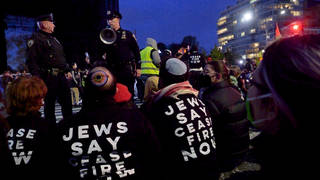
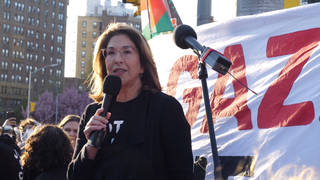
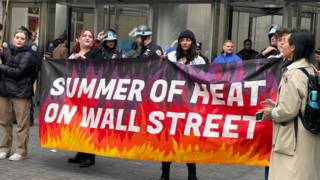
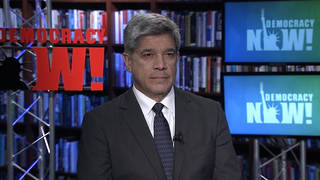






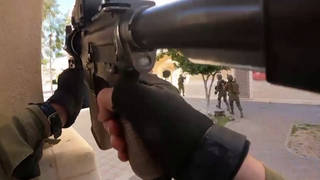
Media Options